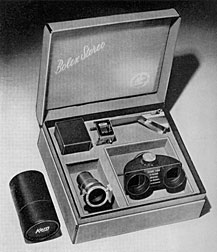 When I graduated from college, my dad and his wife gave me a 16mm Bolex camera from the 1950s. It was a neat gift, but the really unique thing about it was the Stereo Kit that came with it. It was a complete set of stereo lens, projector lens with polarizing filters, and a small silver projection screen. The system works by putting two tall, skinny images side by side on each frame of film. Then when it’s projected, they are offset and overlapped with each one polarized differently, just like a fancy new 3-D movie. Rather than being widescreen though, the image is tall and skinny. Unfortunately in the past I haven’t had the time and money available to get the system going.
When I graduated from college, my dad and his wife gave me a 16mm Bolex camera from the 1950s. It was a neat gift, but the really unique thing about it was the Stereo Kit that came with it. It was a complete set of stereo lens, projector lens with polarizing filters, and a small silver projection screen. The system works by putting two tall, skinny images side by side on each frame of film. Then when it’s projected, they are offset and overlapped with each one polarized differently, just like a fancy new 3-D movie. Rather than being widescreen though, the image is tall and skinny. Unfortunately in the past I haven’t had the time and money available to get the system going.
The major thing missing right now is a 16mm projector that will take the 3-D lens. I can’t quite figure out what kind of projector it even needs to be. And despite being completely obsolete, they’re not always free. In the research I’ve done over the years I’ve heard that the polarizing filters in the projection lens tend to degrade over time. The projection lens definitely looks a little wonky. If that’s the case, then I’m going to have to figure out how to replace the filters. I’ll have to figure out what orientation they go in since they have to match the orientation of the glasses. I have brand-new 3D glasses provided by Coraline, which I’m pretty sure works on the same principle as the Bolex system.
And of course I’ll need to get a 100′ load of 16mm film and run it through the camera. That’s not exactly free either. Being a wind-up Bolex, sync sound isn’t an option (I also don’t have a dual-system projector lying around, or a way to sync it up in the first place) so I’m thinking a series of silent sight-gags involving things flying at the camera. To save money I’m going to shoot reversal, which I haven’t shot since way back in the year 1999. Apparently Kodak stopped making the higher speed color reversal stock, so I’m considering shooting Tri-X 200D B&W reversal. I’m not entirely sure the system will work with color film anyway. That will be an additional experiment I’m sure. A 100 foot roll costs $25. Processing will probably run another $25. Oh, and I guess I’ll need a light meter. It’s also not clear that the camera will run well without repairs. Last time I looked into it I was told it needed about $200 worth of work on it.
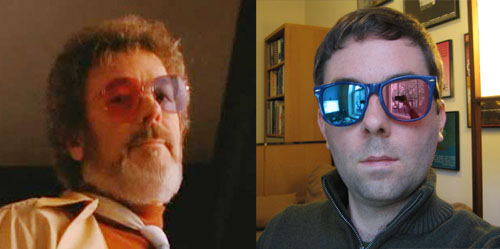
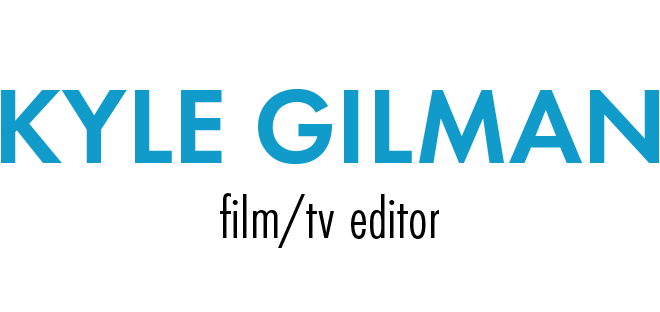
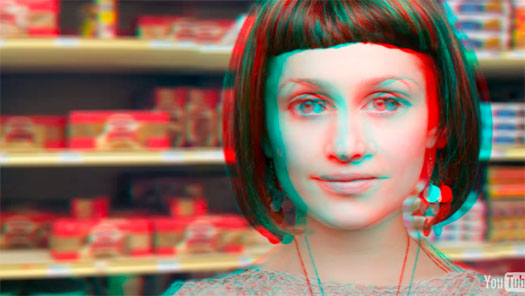
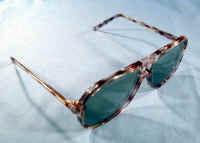
 When I graduated from college, my dad and his wife gave me a 16mm Bolex camera from the 1950s. It was a neat gift, but the really unique thing about it was the Stereo Kit that came with it. It was a complete set of stereo lens, projector lens with polarizing filters, and a small silver projection screen. The system works by putting two tall, skinny images side by side on each frame of film. Then when it’s projected, they are offset and overlapped with each one polarized differently, just like a fancy new 3-D movie. Rather than being widescreen though, the image is tall and skinny. Unfortunately in the past I haven’t had the time and money available to get the system going.
When I graduated from college, my dad and his wife gave me a 16mm Bolex camera from the 1950s. It was a neat gift, but the really unique thing about it was the Stereo Kit that came with it. It was a complete set of stereo lens, projector lens with polarizing filters, and a small silver projection screen. The system works by putting two tall, skinny images side by side on each frame of film. Then when it’s projected, they are offset and overlapped with each one polarized differently, just like a fancy new 3-D movie. Rather than being widescreen though, the image is tall and skinny. Unfortunately in the past I haven’t had the time and money available to get the system going.